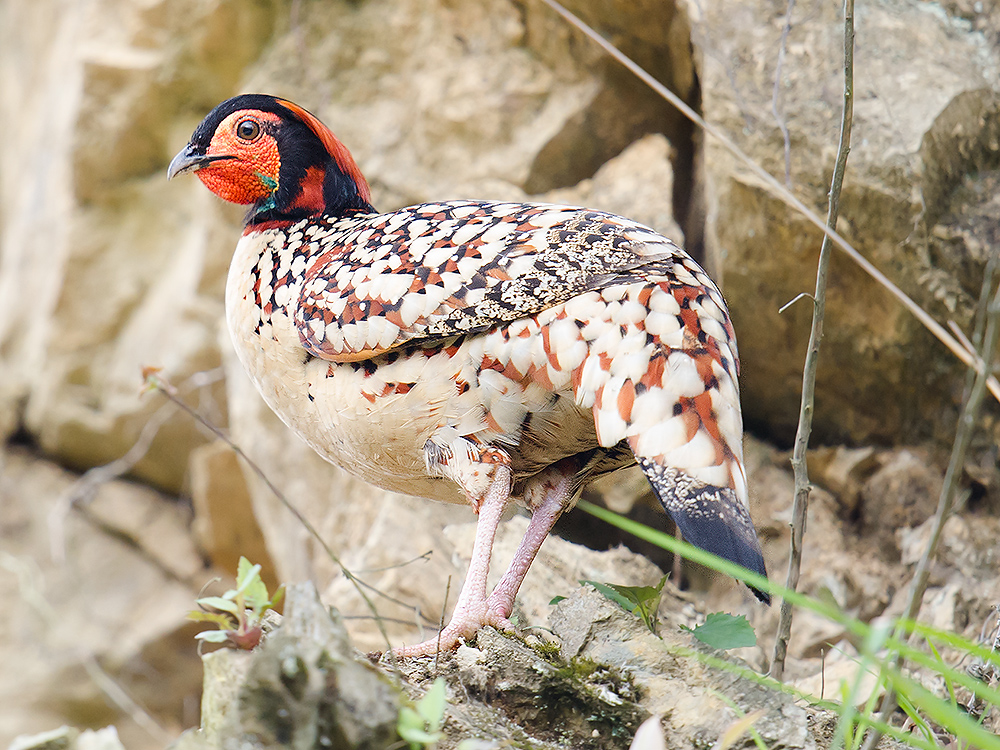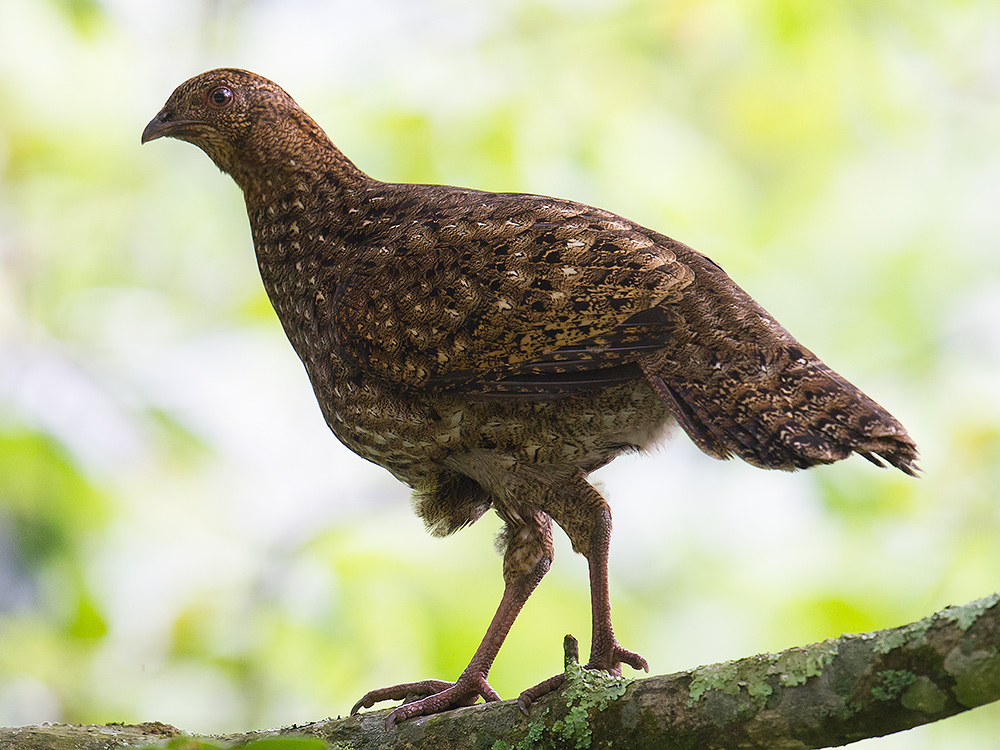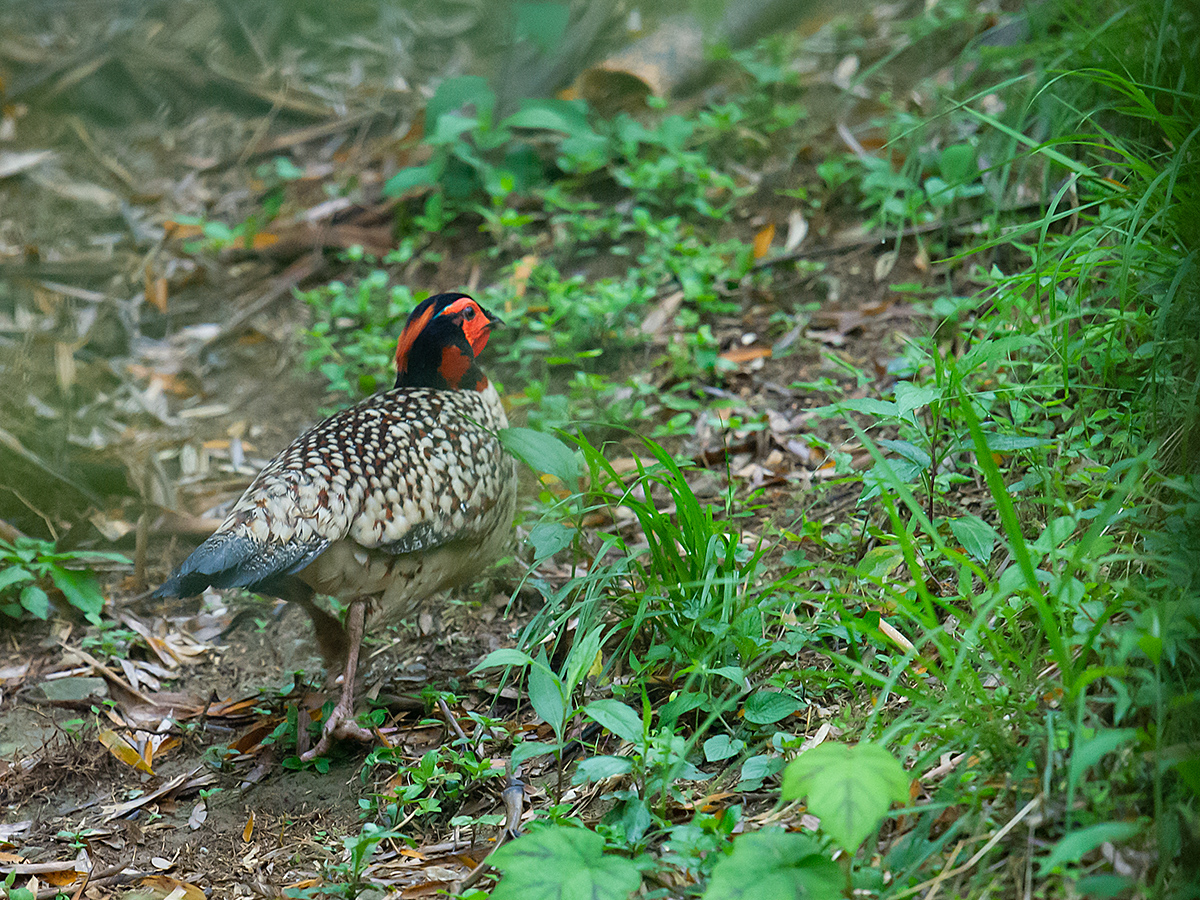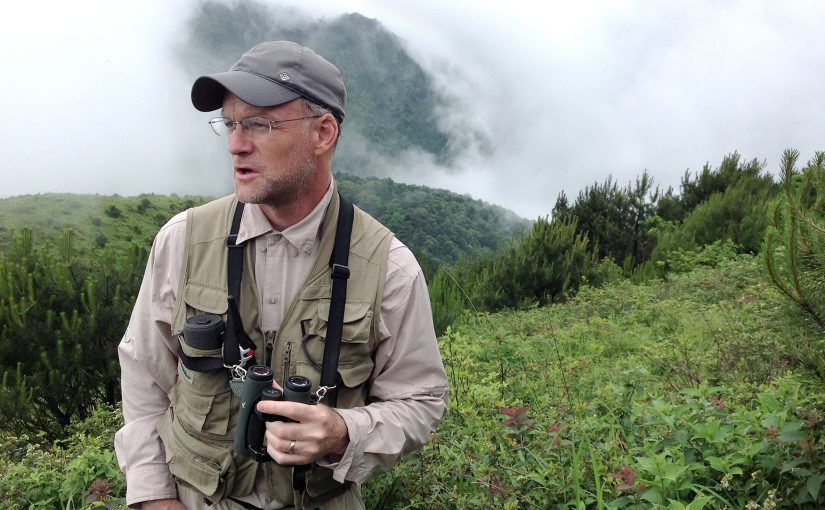Emeifeng, a mountain in Fujian 635 km (395 miles) southwest of Shanghai, ranks high on Shanghai birders’ must-see lists. It is a reliable site for Cabot’s Tragopan, Elliot’s Pheasant, and White-necklaced Partridge, and its vast forests provide habitat for other key southeastern Chinese species. A bit too far to drive, a bit too close to fly, Emeifeng is the perfect expedition for the high-speed train.
This post covers 28 to 31 May, the second of my two four-day trips to the mountain. A post on the first trip is here.
The photo above shows Craig Brelsford searching for Brown Bush Warbler in the pristine alpine scrub on Emeifeng, elev. 1650 m (5,410 ft.). (Elaine Du)
by Craig Brelsford
Founder, shanghaibirding.com
Wed. 27 May
Taining
During our first trip to Emeifeng, Michael Grunwell, my wife Elaine Du, and I agreed to bird the mountain about a month later to see the changes four weeks would bring. Today, that second trip began. As in April, Elaine and I took the high-speed train from Shanghai to Nanchang and at Nanchang boarded the train to Taining. We once again checked in to Huada Hotel (Huádà Jiǔdiàn [华大酒店], +86 598-7817777).
With my camera in the repair shop, I was unable to take photographs. I focused on birding and made many sound-recordings. The bird photos in this post come from other trips.
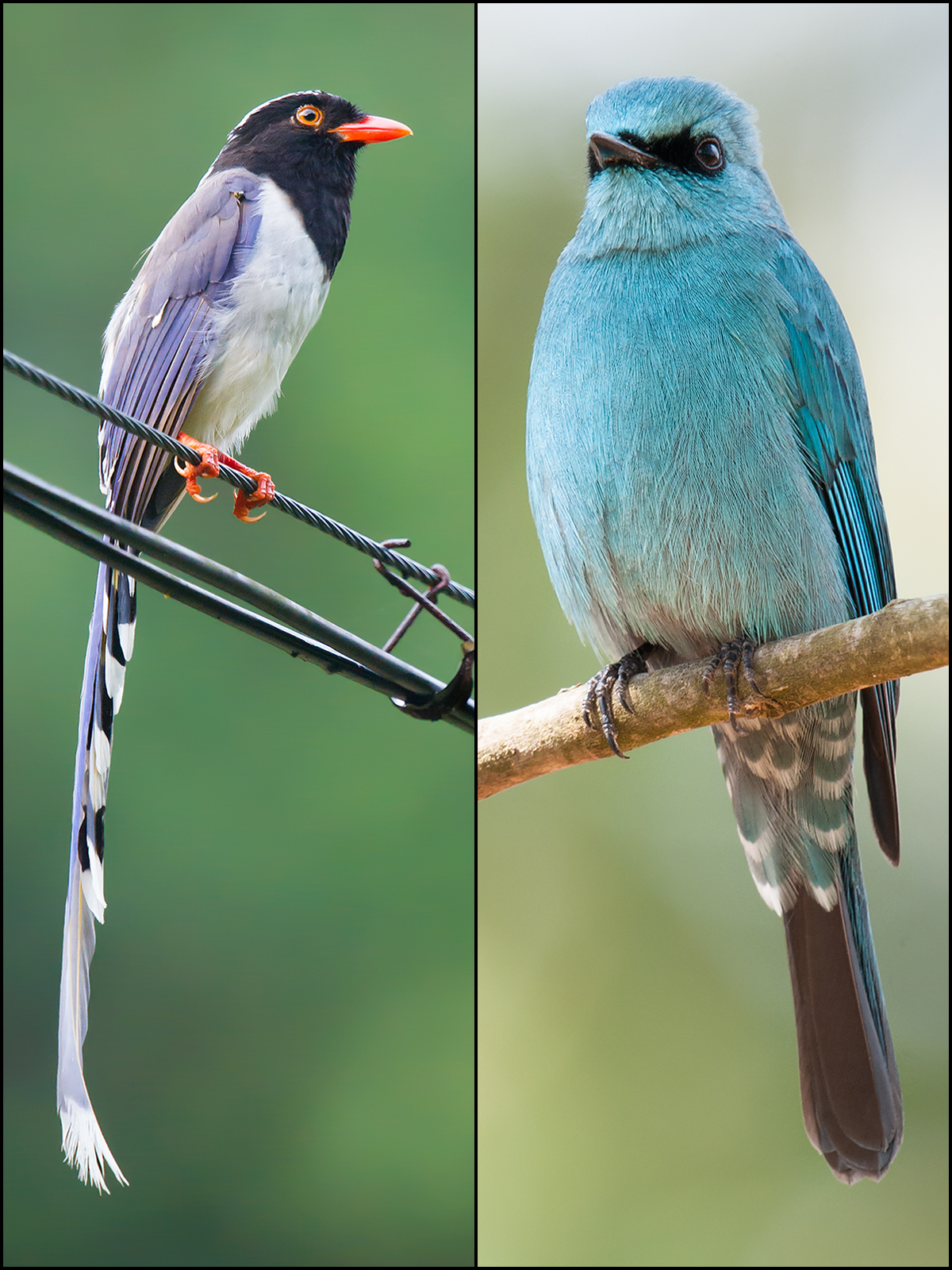
On our return to Emeifeng, Elaine and I noted 57 species. Bird of the day was Elliot’s Pheasant. We also had 5 Silver Pheasant and 16 Buffy Laughingthrush. Little Forktail became our fourth species of forktail seen at Emeifeng, and Yellow-cheeked Tit put on an amazing vocal display.
Elliot’s Pheasant was a life bird for Elaine and me. We found a male near the road to Qingyun Temple just above kilometer marker 8 at an elevation of 1100 m (3,610 ft.). The bird allowed us several seconds to view it before it slipped away. Of the 5 Silver Pheasant we noted today, 4 (3 males, 1 female) were on a hillside just above km 6, at an elev. of 940 m (3,080 ft.).
As was the case four weeks ago, we noted White-spectacled Warbler only above elev. 1400 m (4,590 ft.). The song of this species, coming from various directions, was one of the most common bird sounds today around Qingyun Temple (27.006583, 117.076389). Hartert’s Leaf Warbler was not seen, but our other two “southern” leaf warblers from our earlier trip, Buff-throated Warbler and Sulphur-breasted Warbler, were represented by 1 individual each. Buff-throated Warbler was found along the boardwalk to Qingyun Temple and is presumably one of the same pair that I met at that spot on 30 April. The Sulphur-breasted Warbler that I found four weeks ago responded to playback with song; today’s Sulphur-breasted Warbler responded with a brief call.
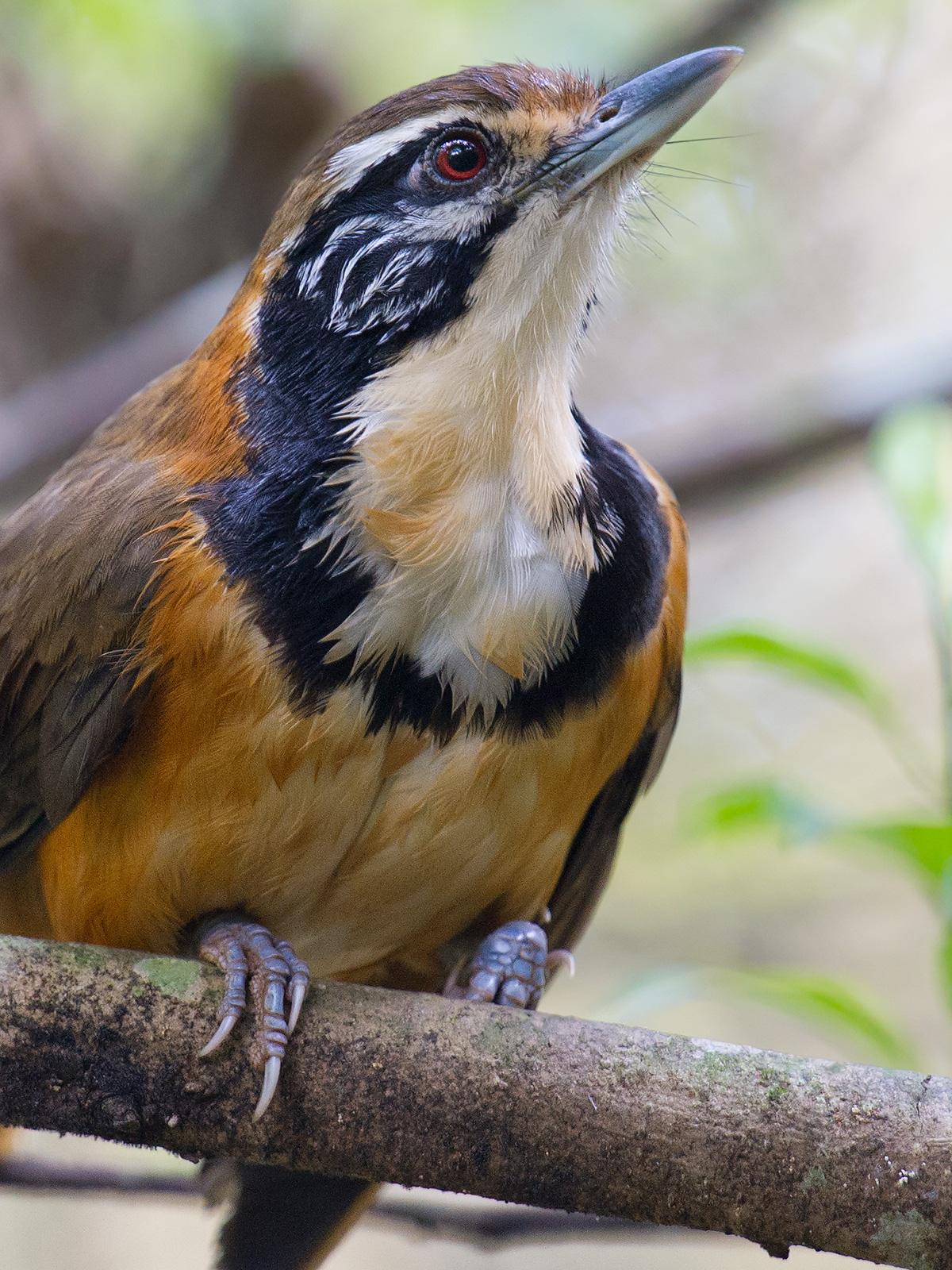
Fog shrouded the Qingyun Temple area most of the day. When it finally cleared, around 15:00, birds became active, as though it were dawn. Buffy Laughingthrush (8) were the main component of a foraging party that included 3 Greater Necklaced Laughingthrush. They moved through the forest next to the boardwalk. The loud, jazzy sound of Buffy Laughingthrush caused a carpenter working in the area to start singing along. Another powerful singer in that wood was Yellow-cheeked Tit. A beautiful male performed three distinct songs for us, stopping only to devour a caterpillar. Here are two songs:
Yellow-cheeked Tit Machlolophus spilonotus rex, song, small wood (27.006585, 117.074617) near Qingyun Temple, Emeifeng, Fujian, China, elev. 1500 m (4,930 ft.), 28 May, by Craig Brelsford (0:18; 1.5 MB)
Yellow-cheeked Tit M. s. rex, song, small wood (27.006585, 117.074617) near Qingyun Temple, Emeifeng, Fujian, elev. 1500 m (4,930 ft.), 28 May, by Craig Brelsford (0:05; 1 MB)
Besides the 8 Buffy Laughingthrush near the temple, we found a flock of 6 quickly crossing the road, 1 amid a flock of 25 Grey-headed Parrotbill, and 1 heard calling from some distant spot in the forest. A pair of Grey-sided Scimitar Babbler were foraging together and calling antiphonally. We found them near the villages in the lower country at an elevation of about 750 m (2,460 ft.).
Besides Elliot’s Pheasant and Little Forktail, Elaine and I today added to our Emeifeng list Lesser Cuckoo, Masked Laughingthrush, Brown Dipper, and Fire-breasted Flowerpecker.
For our driver we again hired Dèng Zhōngpíng (邓忠平, +86 138-6059-6327; no English, non-smoker).
Elaine and I noted 63 species. The highlight of the day was finding Blue-throated Bee-eater and Oriental Dollarbird on a utility wire above Shuibu Reservoir. Blue-throated Bee-eater was new to our Emeifeng list and a lifer for Elaine. Other new birds were Mountain Hawk-Eagle, Common Kingfisher, Crested Kingfisher, Grey-capped Pygmy Woodpecker, Black-naped Oriole, Black Drongo, Red-billed Starling, and White-rumped Munia.
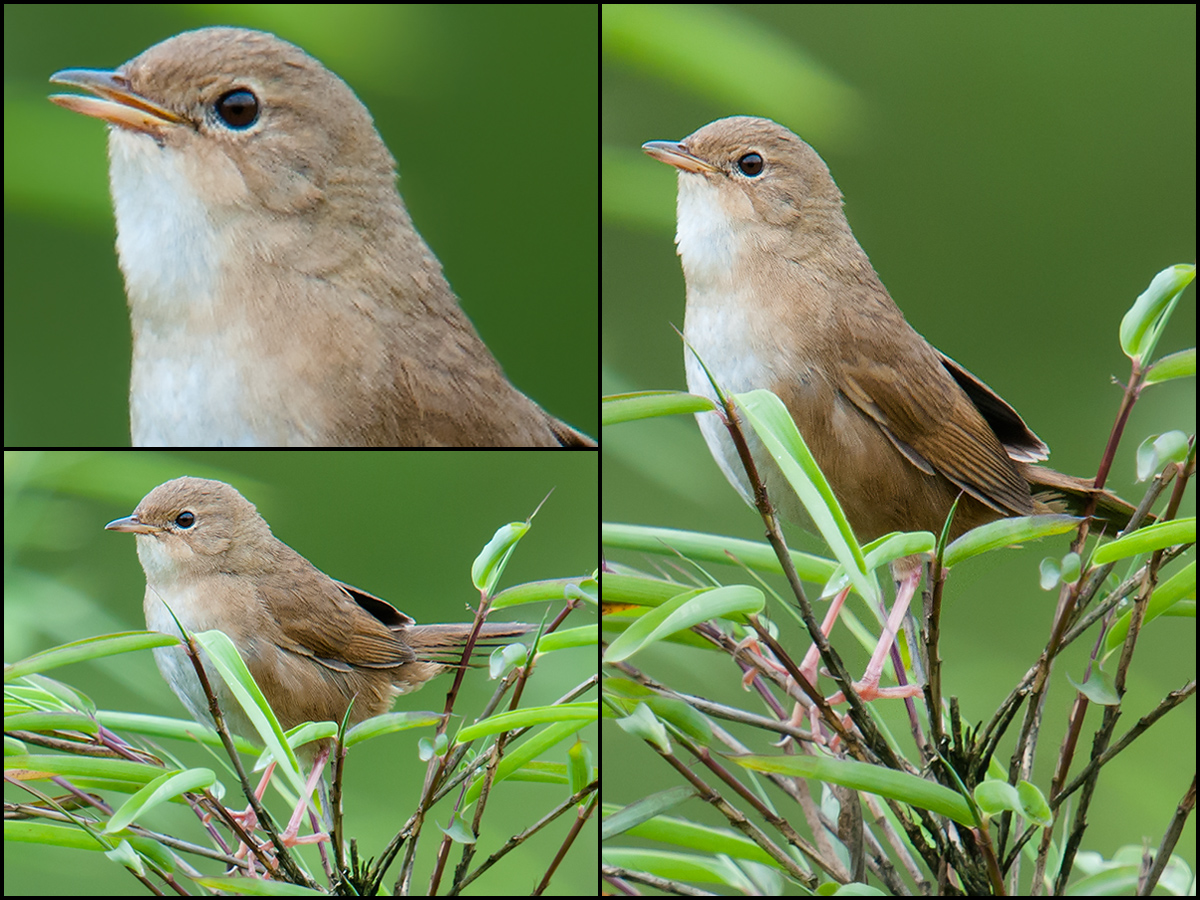
Michael Grunwell joined Elaine and me. We noted 54 species. Elliot’s Pheasant were seen in poor light, Cabot’s Tragopan appeared at an elevation of about 1400 m (4,590 ft.), Blue-throated Bee-eater were present by Shuibu Reservoir, and Brown Bush Warbler were staking out territories at the top of the Emeifeng altitudinal layer-cake.
The Elliot’s were near Shuibu Reservoir at an elevation of about 750 m (2,460 ft.). As darkness was falling, Michael, walking ahead of us along the road, inadvertently flushed a sub-adult male. Elaine and I arrived in time to see 5 females (or perhaps fledglings) exploding into flight from positions just a few meters from us. The tragopans were seen earlier but also in low light, this caused by fog.
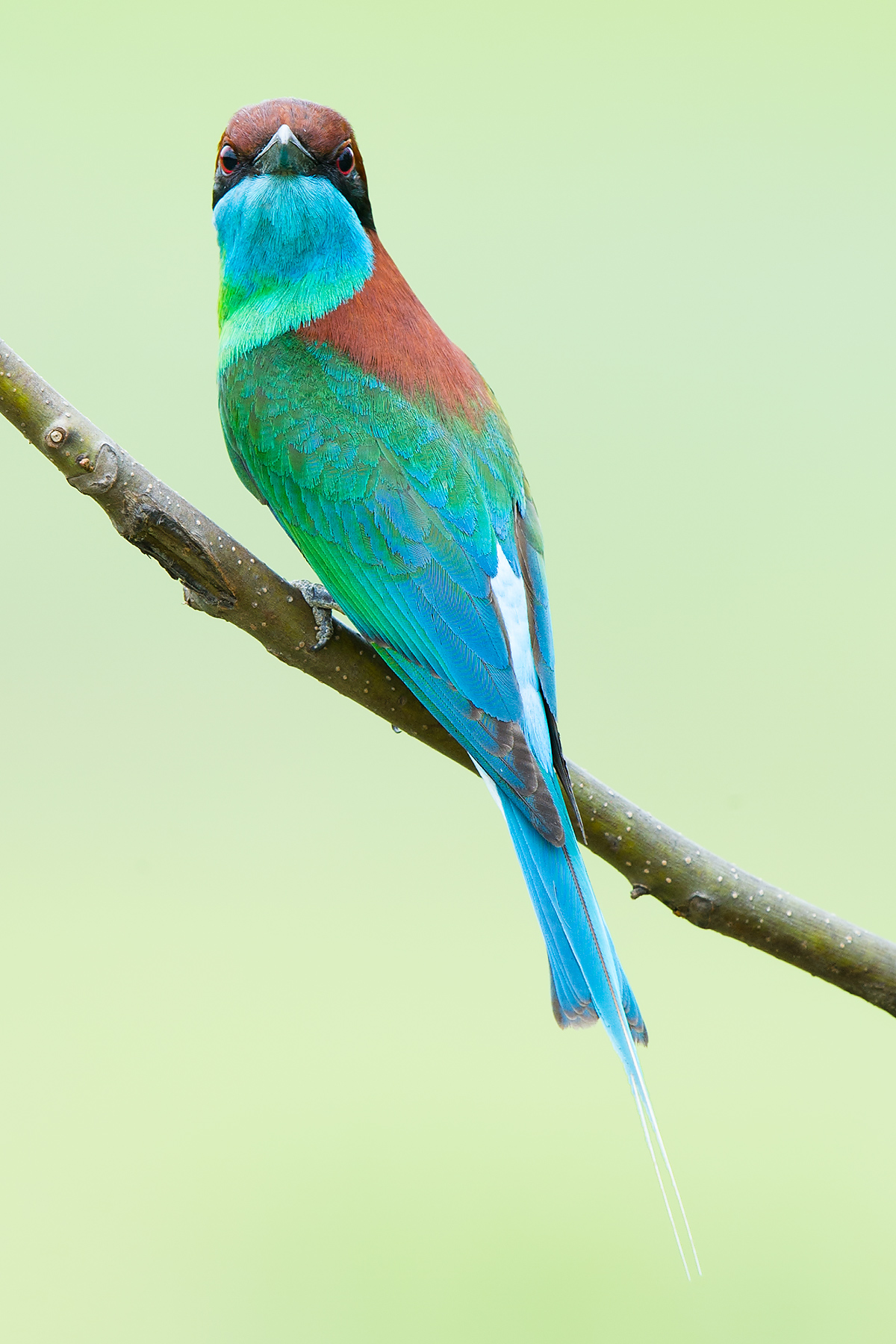
The Blue-throated Bee-eater are a mystery; the species apparently has not bred in the area in recent memory. The habitat around Shuibu Reservoir seems favorable. There are plenty of vertical surfaces of soft earth in which to construct cavity nests, and the artificial lake is at a remote location, near the Fujian-Jiangxi border.
We noted all our Brown Bush Warbler between Qingyun Temple (27.006583, 117.076389) and the radio tower (27.008488, 117.080711) at altitudes of 1500–1700 m (4,920–5,580 ft.). At Emeifeng, the dense alpine scrub that Locustella luteoventris favors occurs only at those altitudes. Confident in their nearly impenetrable tangle of vegetation, the extreme skulkers allowed us to peek in from distances of less than 2 m. I recorded the soft, monotonous song of this species, like a sewing machine running or an automobile idling.
Brown Bush Warbler Locustella luteoventris, sewing-machine song, near the radio tower (27.008488, 117.080711) at Emeifeng, Fujian, China, elev. 1600 m (5,250 ft.), 30 May, by Craig Brelsford (0:06; 266 KB)
Brown Bush Warbler L. luteoventris, sewing-machine song, near the radio tower (27.008488, 117.080711) at Emeifeng, Fujian, elev. 1600 m (5,250 ft.), 30 May, by Craig Brelsford (0:24; 999 KB)
The three of us wanted to explore more of the high country on the peak directly opposite the radio tower, but clouds again engulfed the ridgeline, and rain started to fall.
A search for Spotted Elachura between kilometer markers 12 and 13 got us wet feet but no bird. Hartert’s Leaf Warbler and Sulphur-breasted Warbler also were not noted, a surprise given that we had heard these species singing and defending territories a month earlier.
Besides Brown Bush Warbler, Elaine and I today added to our Emeifeng list Black Bittern and Asian Barred Owlet.
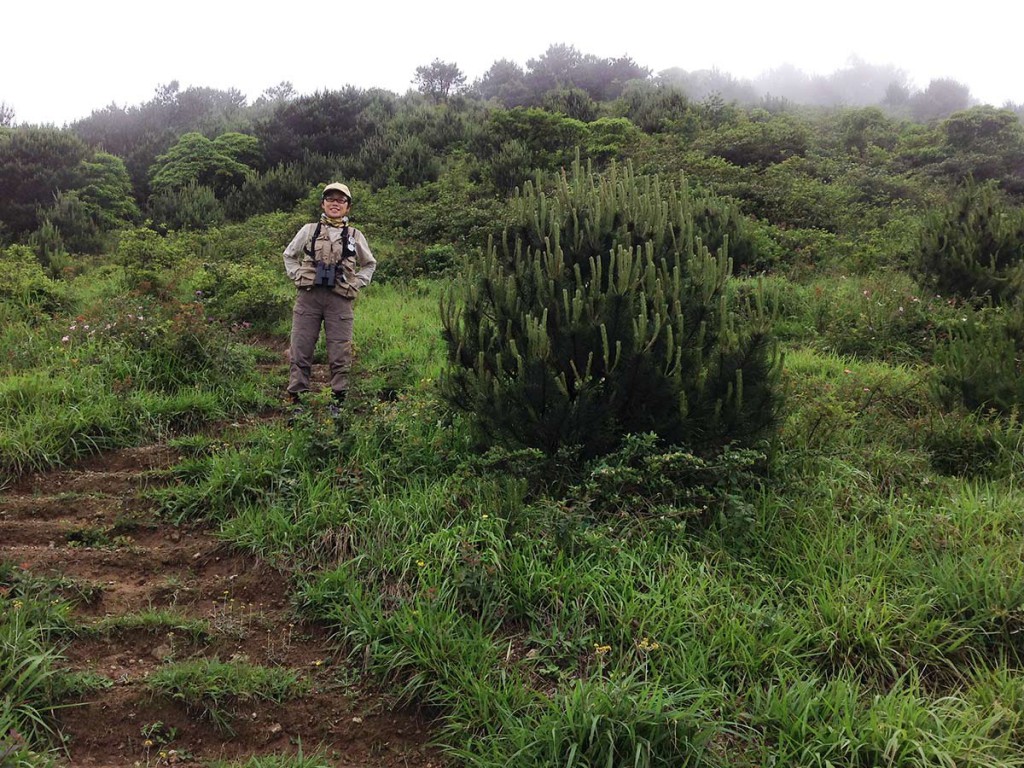
Elaine and I noted 48 species. From the lodge area atop Emeifeng we walked to the little tower on the slope opposite the radio tower. The little tower sits amid pristine alpine scrub and is reachable only by foot. We walked to an elevation of about 1650 m (5,410 ft.). We were searching for Russet Bush Warbler and failed to find it. We found species similar to those in the scrub between the radio tower (27.008488, 117.080711) and Qingyun Temple (27.006583, 117.076389), among them Brown Bush Warbler and Buff-throated Warbler.
Earlier, on the dirt road behind the locked gate in the lodge area, Mr. Deng came running back to me, signaling for me to come. We tiptoed a few steps, and there she was, the queen of the high forest, a female Cabot’s Tragopan. She was standing on the edge of the forest track. The tragopan did not flee but foraged calmly in front of us for two magic minutes before creeping silently into the forest.
The magic feeling continued in the alpine scrub. We saw no evidence of logging; the scrub is there not because an older forest was cut, but because Mother Nature intended it that way. The place exudes health and balance. Grass grows lushly, and one can look at almost any spot on the ground and find many types of colorful insects. Butterflies flit from flower to flower. When the clouds parted, we enjoyed the commanding view of the forest below. Flybys of Great Barbet and Chestnut-bellied Rock Thrush enlivened the scene. White-necklaced Partridge, Large Hawk-Cuckoo, and Lesser Cuckoo called from hidden locations below. Buff-throated Warbler were busy patrolling their territories, standing sentinel atop the shrubs. Brown Bush Warbler were not calling spontaneously, and their presence might not have been detected but for their vigorous response to playback.
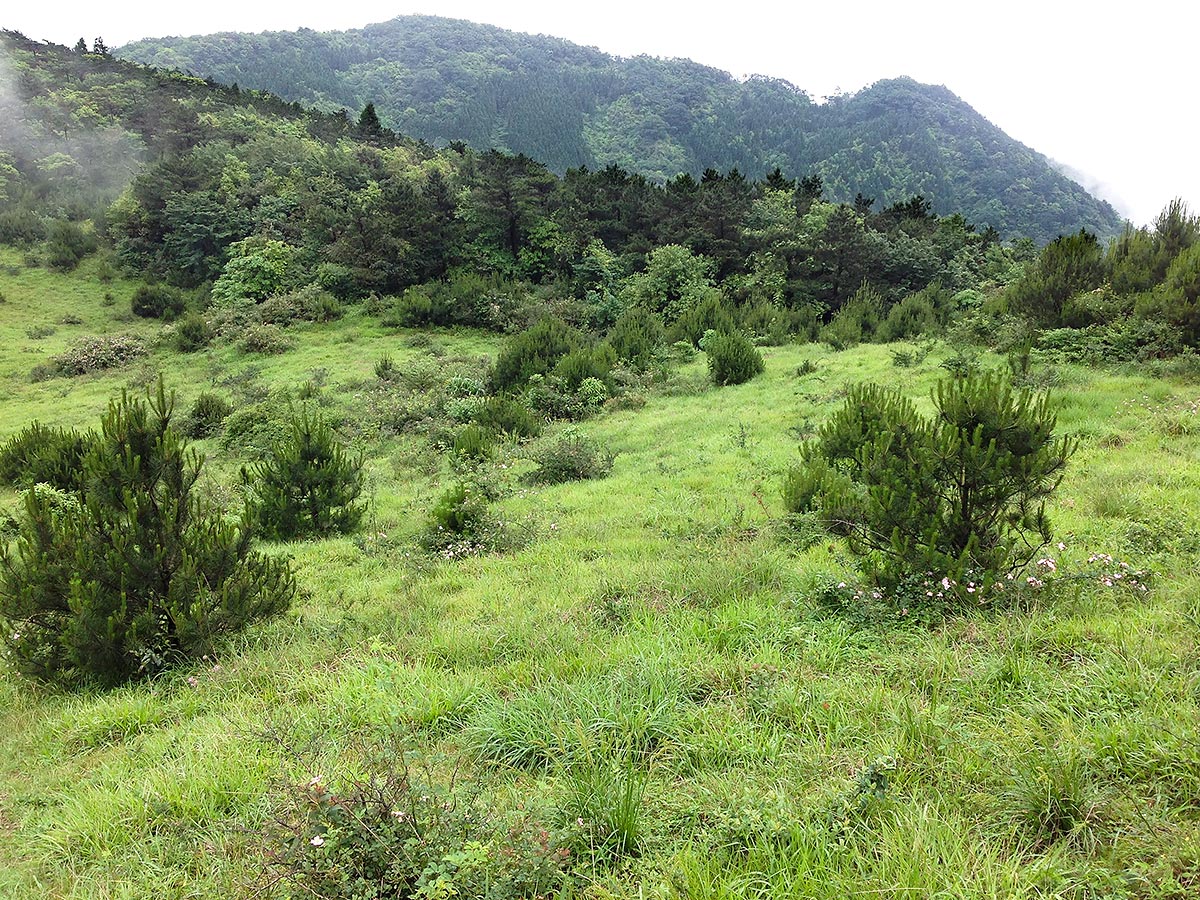
The day was nearly windless, and few tourists were visiting the top. The golden silence was broken only by birds, among them a drumming Speckled Piculet. The songs of Blyth’s Shrike-babbler and White-spectacled Warbler carried far. In the contest of laughingthrush songs, Chinese Hwamei took the prize for power, and Buffy Laughingthrush won for melody. Here is a selection of what we heard:
White-spectacled Warbler Phylloscopus intermedius, Emeifeng, (27.0258, 117.0827), Fujian, China, elev. 1550 m (5,090 ft.), 31 May, by Craig Brelsford (0:03; 913 KB)
Blyth’s Shrike-babbler Pteruthius aeralatus ricketti, Emeifeng (27.0258, 117.0827), Fujian, elev. 1550 m (5,090 ft.), 31 May, by Craig Brelsford (0:10; 1 MB)
Blyth’s Shrike-babbler P. a. ricketti, Emeifeng (27.0258, 117.0827), Fujian, elev. 1550 m (5,090 ft.), 31 May, by Craig Brelsford (1:35; 4 MB)
Speckled Piculet Picumnus innominatus, Emeifeng, (27.0258, 117.0827), Fujian, elev. 1550 m (5,090 ft.), 31 May, by Craig Brelsford (1:10; 3.6 MB)
Driving back down the hill, we found a male Silver Pheasant at 1300 m (4,270 ft.) and a female Elliot’s Pheasant at 1200 m (3,940 ft.).
In addition to Speckled Piculet, Black-collared Starling was new to our Emeifeng list.
PHOTOS
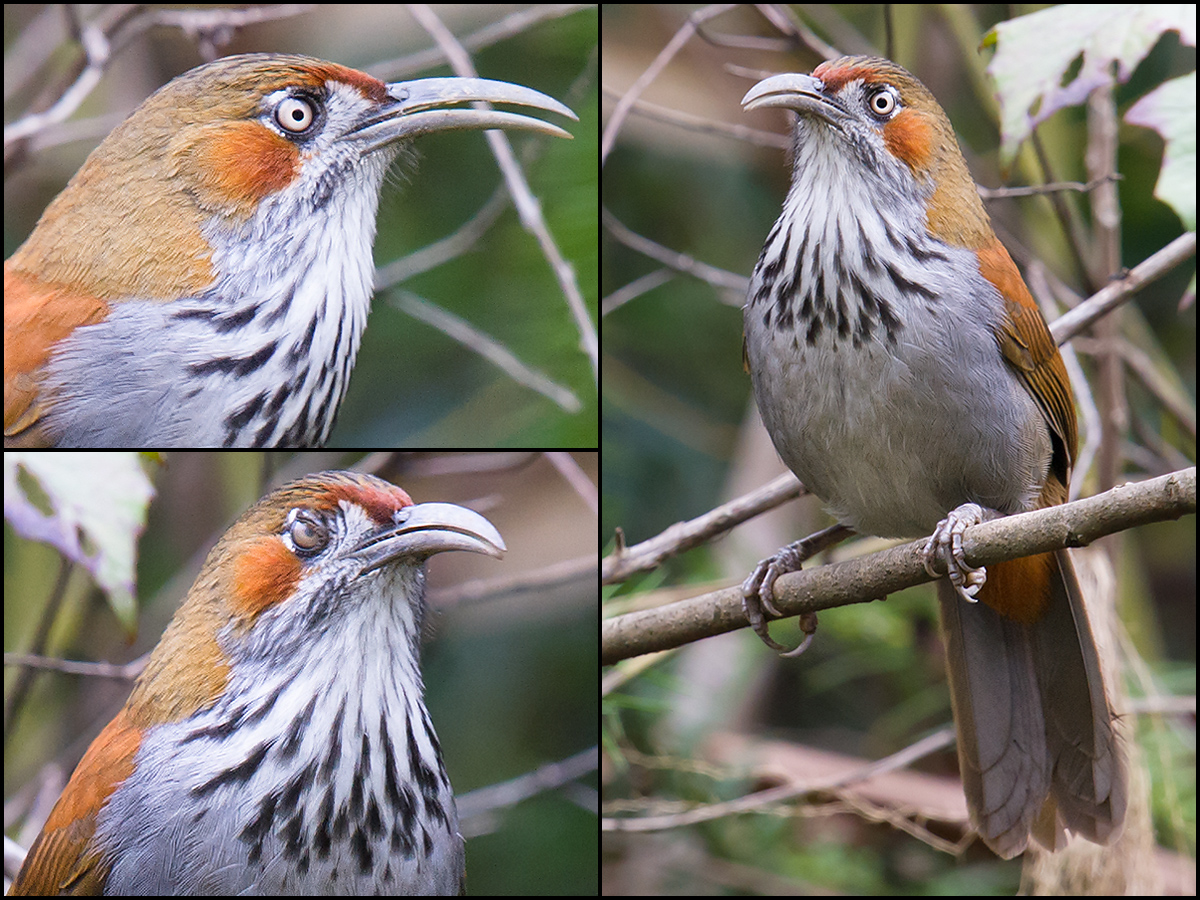
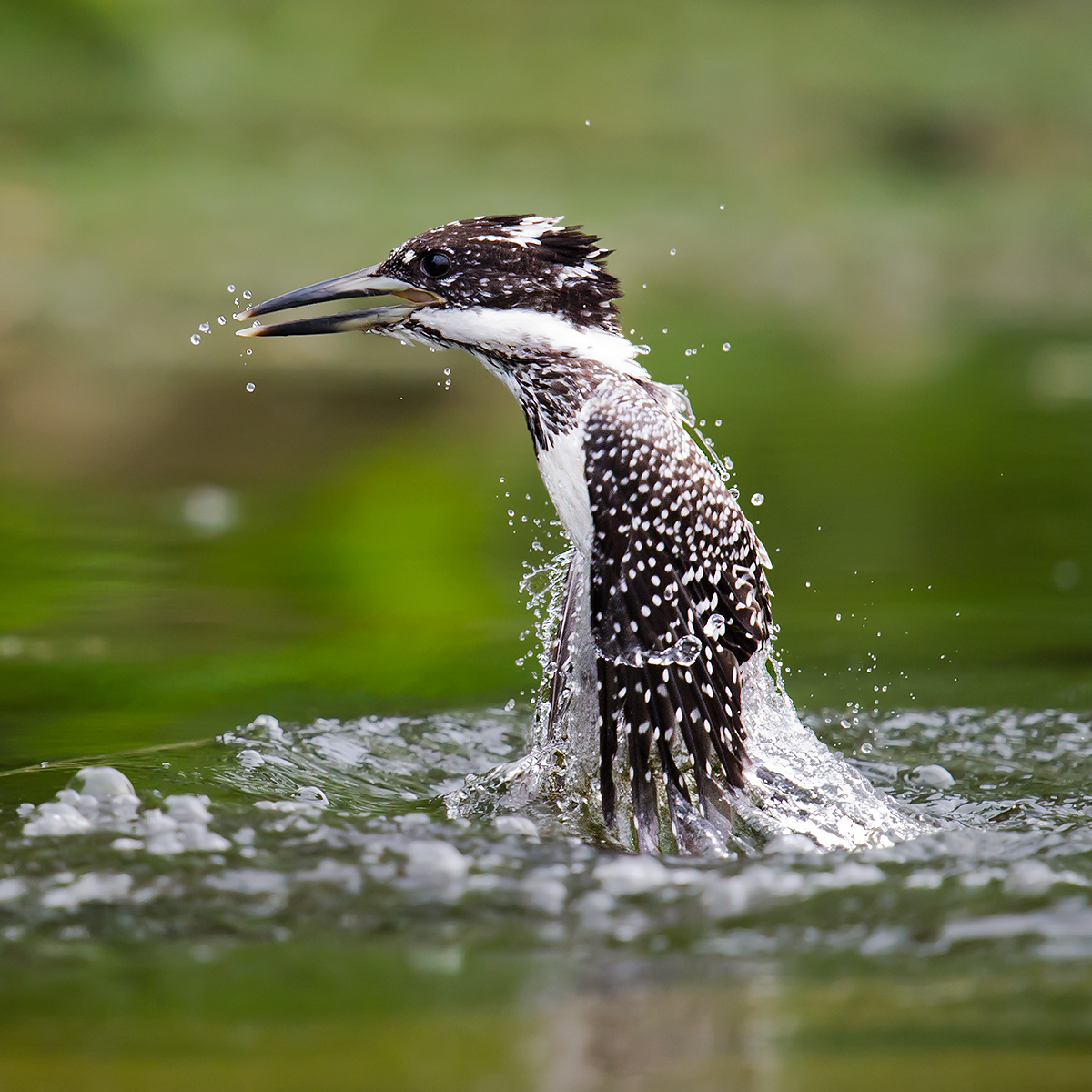
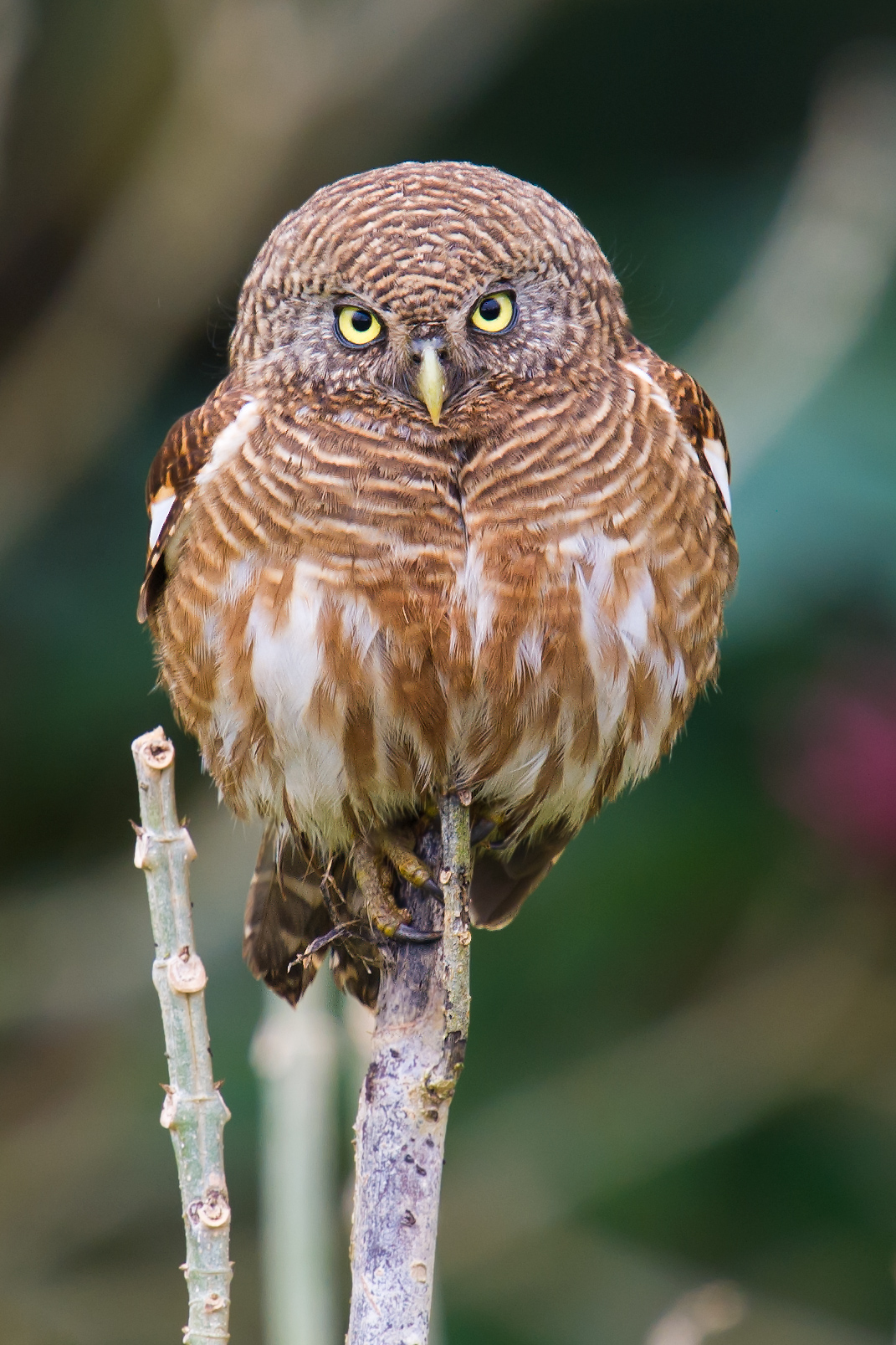
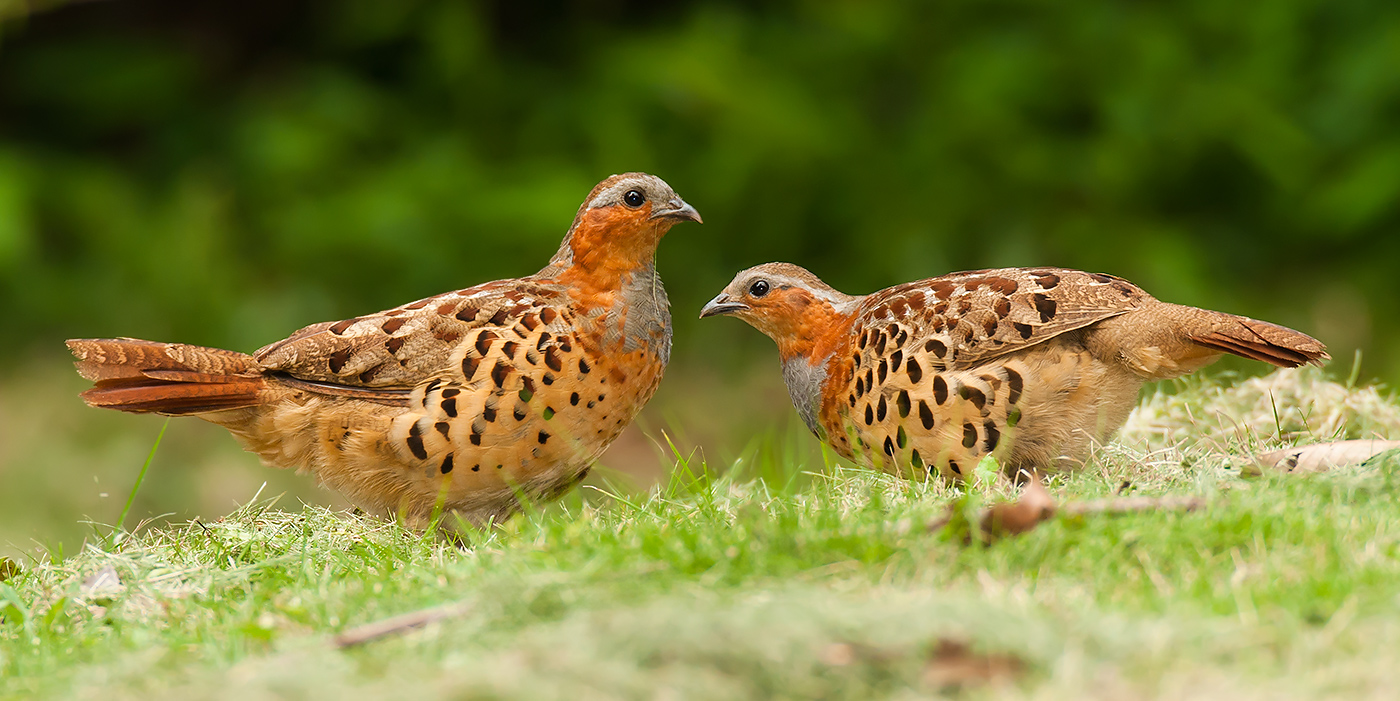
BIBLIOGRAPHY
Brazil, Mark. Birds of East Asia. Princeton University Press. Along with Birds of Southeast Asia, my first reference at Emeifeng.

MacKinnon, John & Karen Phillipps. A Field Guide to the Birds of China. Oxford University Press.
Robson, Craig. Birds of Southeast Asia. Princeton University Press. Co-first reference at Emeifeng.
ACKNOWLEDGEMENTS
Per Alström sent me a recording of Hartert’s Leaf Warbler. Michael Grunwell’s recommendation of Emeifeng enticed us to go; his knowledge of the area was indispensable.
FURTHER READING
Study our coverage of Emeifeng and other great birding locations in southeast China:
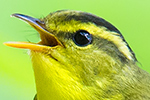
Birding Emeifeng, Fujian in Early May: We studied four Phylloscopus warblers that breed in southern China: Buff-throated Warbler Phylloscopus subaffinis, Sulphur-breasted Warbler P. ricketti, Hartert’s Leaf Warbler P. goodsoni fokiensis, and White-spectacled Warbler P. intermedius.
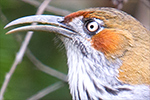
Birding Emeifeng in February: Conditions were springlike in the lower elevations, cool and quiet near the top. We noted Silver Pheasant at the summit lake, heard but never saw White-necklaced Partridge, and ticked China endemic Grey-sided Scimitar Babbler.
See also
• Home to Shanghai (Plus a Jaunt to Fujian)
• Trip Planner: Fuzhou National Forest Park
• Nonggang Babbler: From ‘New to Science’ to ‘Automatic Tick’
• Birding China’s Hainan Island
• Zhejiang’s Tianmu Mountains: A Must See Site for Shanghai Birders

